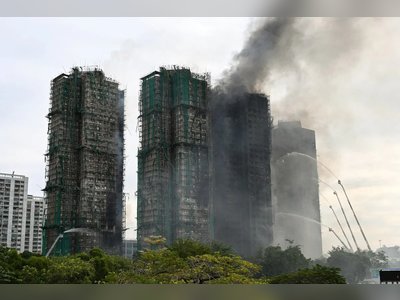
Trump Moves to Fully Demolish White House East Wing to Make Way for New $300 Million Ballroom
Demolition of the historic East Wing begins ahead of presidential-era grand event space, sparking preservation debate
Partial demolition of the East Wing of the White House began in late October 2025 as President Donald Trump proceeds with construction of a new 90,000-square-foot ballroom on the eastern side of the Executive Residence.
The building, originally erected in 1902 and expanded in 1942, was announced for replacement during the summer.
Trump had previously pledged the new facility would “not interfere with the current building,” but just days into the demolition the administration confirmed the whole East Wing would be modernised and removed to create space for the ballroom complex.
The project is privately funded and priced at about $300 million, up from earlier estimates of approximately $200 million.
While the White House emphasises the venue will eliminate the need for outdoor tents at state dinners and enable more elegant hosting of global leaders, preservation groups and lawmakers have expressed concern.
The National Trust for Historic Preservation called for a pause, warning the new structure could “overwhelm the White House itself and permanently disrupt the carefully balanced classical design.”
Legal and procedural questions are also emerging.
The Trump-appointed head of the National Capital Planning Commission (NCPC) has said demolition may proceed without the standard public review process, because the Commission claims it only regulates “vertical build” rather than site preparation.
A federal court motion has been filed by a Virginia couple seeking a temporary restraining order on the project, arguing that required approvals under the National Historic Preservation Act and other statutes were bypassed.
Polling suggests public opposition is significant: a recent survey found 56 % of Americans disapprove of the demolition project, while 28 % support it.
Republicans are broadly in favour (62 %), whereas 88 % of Democrats oppose it.
The debate underscores deeper questions about the long-term stewardship of the nation’s chief historic residence and the interplay between private funding and public symbolism.
The building, originally erected in 1902 and expanded in 1942, was announced for replacement during the summer.
Trump had previously pledged the new facility would “not interfere with the current building,” but just days into the demolition the administration confirmed the whole East Wing would be modernised and removed to create space for the ballroom complex.
The project is privately funded and priced at about $300 million, up from earlier estimates of approximately $200 million.
While the White House emphasises the venue will eliminate the need for outdoor tents at state dinners and enable more elegant hosting of global leaders, preservation groups and lawmakers have expressed concern.
The National Trust for Historic Preservation called for a pause, warning the new structure could “overwhelm the White House itself and permanently disrupt the carefully balanced classical design.”
Legal and procedural questions are also emerging.
The Trump-appointed head of the National Capital Planning Commission (NCPC) has said demolition may proceed without the standard public review process, because the Commission claims it only regulates “vertical build” rather than site preparation.
A federal court motion has been filed by a Virginia couple seeking a temporary restraining order on the project, arguing that required approvals under the National Historic Preservation Act and other statutes were bypassed.
Polling suggests public opposition is significant: a recent survey found 56 % of Americans disapprove of the demolition project, while 28 % support it.
Republicans are broadly in favour (62 %), whereas 88 % of Democrats oppose it.
The debate underscores deeper questions about the long-term stewardship of the nation’s chief historic residence and the interplay between private funding and public symbolism.












